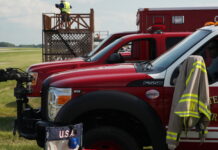Soon enough, the FAA will require every air show in the United States to conduct a structured emergency response drill as a precondition of issuing an air show waiver. But, in the meantime, some shows may still need encouragement. Here are a few reasons for you to conduct a Friday drill this year and not wait until you are required to do so by the FAA:
- The most thorough and well-structured emergency response plan is just that, a plan, until it is put to the test of being implemented. As an event organizer, you can wait for that implementation experience to come during a no-kidding, people-could-die emergency or you can run a drill on Friday to see if your plan works in practice.
- Absolute worst case? You run an exercise on Friday that goes exactly as you would expect it to and discover that both the plan AND its implementation are excellent. But, experience within the air show community suggests that it’s more likely that either a) you’ll have a few small adjustments that you’ll want to make after you run your Friday drill to ensure that – in the event of a real emergency – your response will be just a little better or b) you’ll run into serious problems that require a careful debrief and specific changes for Saturday and Sunday.
- Protocols for Friday drills have been developed and used all over the U.S. and Canada. These early adopters have done the heavy lifting for you and your team. Just follow the protocol and you’ll head into the weekend with a much higher level of confidence about your plan and how well your team will implement it if that becomes necessary.
- It’s easy. It shouldn’t take more than 15 minutes to conduct and not much more than that to plan.
- No matter how confident you are in your plan, your pre-show review of that plan and/or any table top exercises you may have conducted in the months and weeks leading up to your show, there is no substitute for a live drill conducted when personnel, tents, fencing, concessions stands and static display aircraft are in position where they’ll be in the event of a real emergency on Saturday or Sunday. There is no substitute for a live drill.
- Sadly, our industry has suffered through too many fatal accidents that might have been survivable with a faster and/or more organized response. We hope that we’ve seen the last of those and that all of our members will learn from past mistakes in our industry. One important part of avoiding these problems in the future is to run a live drill on Friday to determine if your plan will work as designed and, if not, where the potential problems might occur.
To read detailed instructions on how and when to conduct a live emergency response drill on rehearsal day, click here.








